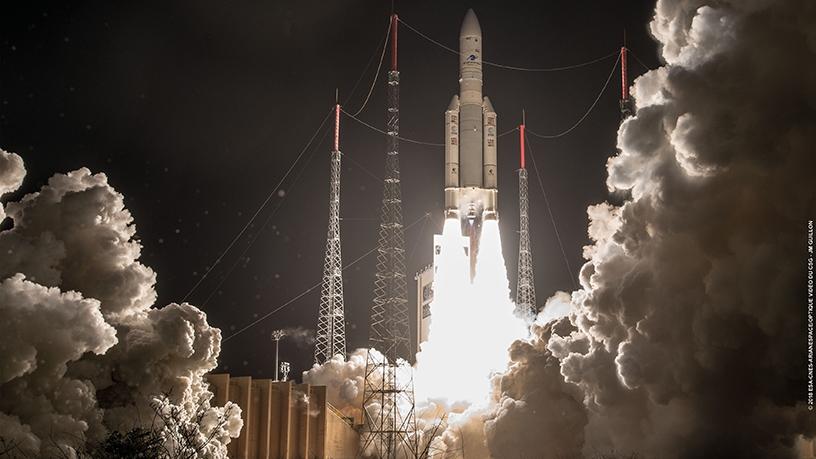
United Arab Emirates-based satellite operator Yahsat has launched its third commercial satellite, Al Yah 3, despite a rare anomaly and trajectory deviation leading to a loss of communication in the early stages of the launch.
The Al Yah 3 satellite is supposed to expand Yahsat's commercial Ka-band coverage to an additional 19 markets in Africa, reaching 60% of the continent's population, as well as providing coverage to 95% of Brazil.
The Ariane 5 rocket lifted off at 22:20 GMT on 25 January from the Guiana Space Centre in French Guiana carrying two satellites, the SES-14 and Al Yah 3 communications satellites, as well as a hosted payload for NASA.
However, the mission experienced some challenges early on and a trajectory deviation resulted in both satellites being inserted into an orbit that differed from the flight plan.
ITWeb watched the VA241 launch from the Jupiter centre control room at the Guiana Space Centre in Kourou and after what seemed like a normal lift-off it became apparent that all was not well.
The SES-14 satellite was supposed to separate from the Ariane 5 rocket 27 minutes into the flight and Al Yah 3 was to separate eight minutes later. At first it seemed SES-14 had separated as planned but the separation of Al Yah 3 could not be confirmed. A tense 25 minutes followed. Finally, Arianespace CEO Stephane Israel came to the podium to announce Ariane 5 had experienced an "anomaly". A loss of telemetry had occurred and the satellites' locations were unclear.
Later, Arianespace confirmed the telemetry issue actually happened nine minutes and 26 seconds into the flight when ground-tracking stations lost contact with the Ariane 5 launcher. Initial investigations show the situation resulted from a trajectory deviation.
"A few seconds after ignition of the upper stage, the second tracking station located in Natal, Brazil, did not acquire the launcher telemetry. This lack of telemetry lasted throughout the rest of powered flight," Arianespace explained in a statement.
"Subsequently, both satellites were confirmed separated, acquired and they are in orbit. SES-14 and Al Yah 3 are communicating with their respective control centres. Both missions are continuing," the group added.
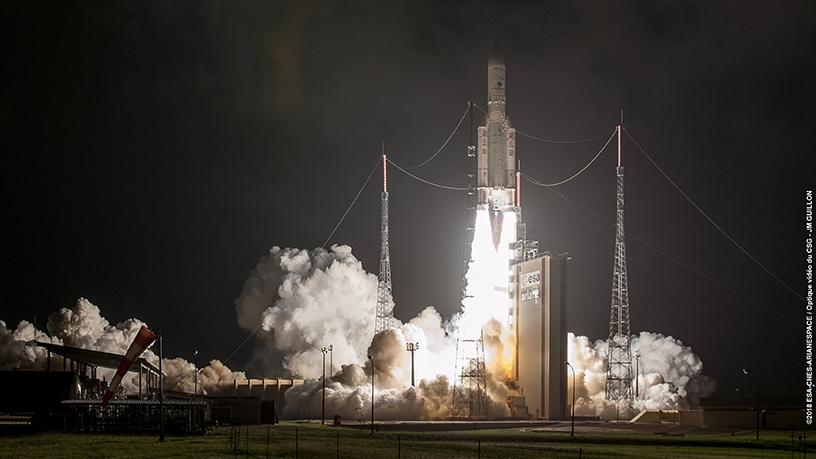
Yahsat later confirmed its satellite "is healthy and operating nominally".
"A revised flight plan will be executed in order to achieve the operational orbit and fulfil the original mission," Yahsat said.
"We are pleased to know the satellite is healthy, and that the necessary steps are being taken to ensure the original mission is fulfilled," said Yahsat CEO Masood M Sharif Mahmood.
Al Yah 3, an all Ka-band satellite, is the first hybrid electric propulsion GEOStar-3 satellite completed by American aerospace manufacturer, Orbital ATK.
"Based on data from initial communications, I can report that Al Yah 3 is in orbit, healthy and responding to commands from our mission operations team," said Frank Culbertson, president of Orbital ATK's Space Systems Group.
It is still unclear why the rocket and satellites went off course but the Orbital ATK and Yahsat team say they are "working on a strategy to most efficiently get the satellite back into the original planned orbit".
Post-launch it will be a few months before satellite services are commercially available. Yahsat said operations and testing may range from two to four months. In-orbit testing usually takes six weeks, but it could take an additional week because of the trajectory deviation. SES said that because of the anomaly, its satellite would need an additional four weeks to reach its allocated orbital slot.
The launch anomaly was highly unusual as the Ariane 5 had completed 82 consecutive launches since 2003 without incident. Arianespace has set up an independent investigation commission chaired by the European Space Agency's general inspector to establish what caused the anomaly.
Despite this, Arianespace says the upcoming launch campaigns currently under way at the Guiana Space Centre will proceed as scheduled.
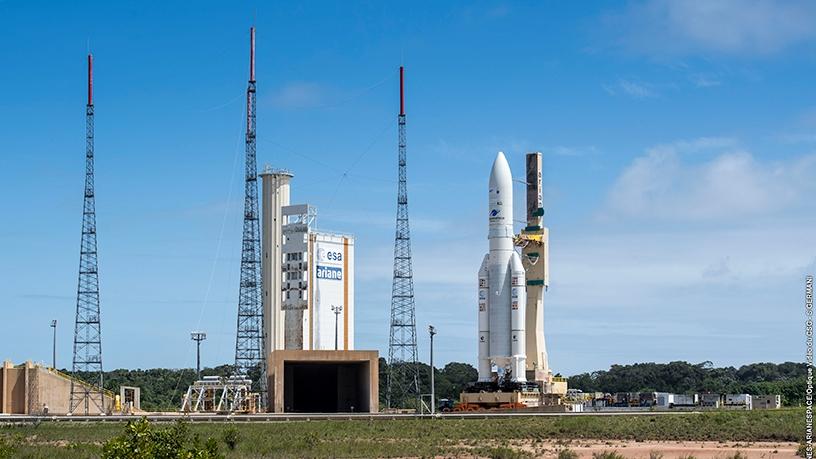
The missions
The SES-14 satellite was the 53rd satellite launched by Arianspace for Luxembourg-based satellite operator SES (Soci'et'e Europ'eenne de Satellites), and is aimed mostly at providing connectivity to the Latin America, Caribbean, North America and North Atlantic region.
The launch also included a hosted payload for NASA called the Global-Scale Observations of the Limb and Disk (GOLD), with the goal of measuring densities and temperatures in the Earth's thermosphere and ionosphere. It will also provide unprecedented imaging of the Earth's upper atmosphere from geostationary orbit.
Al Yah 3 joins Yahsat's Al Yah 1 and Al Yah 2, which launched in 2011 and 2012 respectively. Al Yah 3 will triple Yahsat's commercial Ka-band coverage in Africa and adds Brazil as a new market for Yahsat. Ahead of the new satellite's launch, Yahsat already had presence in nine African countries and when Al Yah 3 comes online it will have upped that to 28.
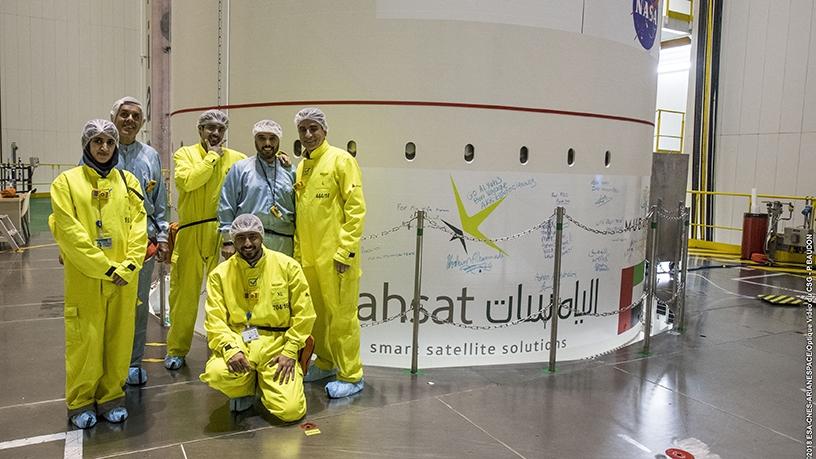
Al Yah 3 will be able to provide broadband to 25 countries, 24 in Africa and Brazil. Five of the African countries (Angola, Lesotho, Nigeria, South Africa and Swaziland) are already covered by Yahsat's previous satellites, while an additional 19 countries on the continent have been added.
The new countries are Algeria, Botswana, Benin, Burundi, Cameroon, Congo, Cote D'Ivoire, Democratic Republic of the Congo, Gambia, Ghana, Libya, Morocco, Mozambique, Malawi, Senegal, Rwanda, Togo, Zambia and Zimbabwe.
African expansion
"The demand that we have seen in the market, and especially in the African market, has encouraged us to enrich our capacity in those markets and also increase the number of countries that we have coverage in," Mahmood told ITWeb during an interview on the day of the launch.
"This will also deepen the coverage and the capacity in South Africa. Our initial coverage was good but this is better," he said. "Africa is an important market for us and after six years of operation in that market, we are the number one satellite and broadband provider in Africa."
In terms of revenue, Africa's contribution is the most significant part of Yahsat's satellite broadband business.
Farhad Khan, Yahsat's chief commercial officer, told ITWeb that Al Yah 3 will triple the group's existing presence in Africa.
"Our growth over the past five years, especially in Africa, has been tremendous. Africa remains a high-priority market for us. With the launch of Al Yah 3 we will not only expand to new markets in Africa but will also have more capacity to serve current markets like South Africa," Khan said.
Brazilian foray
According to Khan, Brazil is by far the largest market in terms of population, GDP and land mass within South America, which "offers exciting growth opportunities for Yahsat".
Mahmood said Brazil adds to the company's objective to target underserved and sometimes unserved geographies and markets.
"Whilst Brazil has advanced significantly over the past two decades in terms of telecommunications infrastructure, it still faces a significant uphill struggle to connect all of the population with quality broadband in suburbs of major cities, smaller towns and rural areas," added Khan.
"Brazilians are some of the heaviest online users globally, spending an average of more than 27 hours per month online, against a global average of 24.7 hours per month, whilst conversely approximately 60% of homes lack Internet access," Khan said.
Yahsat is based in Abu Dhabi, UAE, and is wholly owned by Mubadala Investment Company, the investment vehicle of the government of Abu Dhabi.
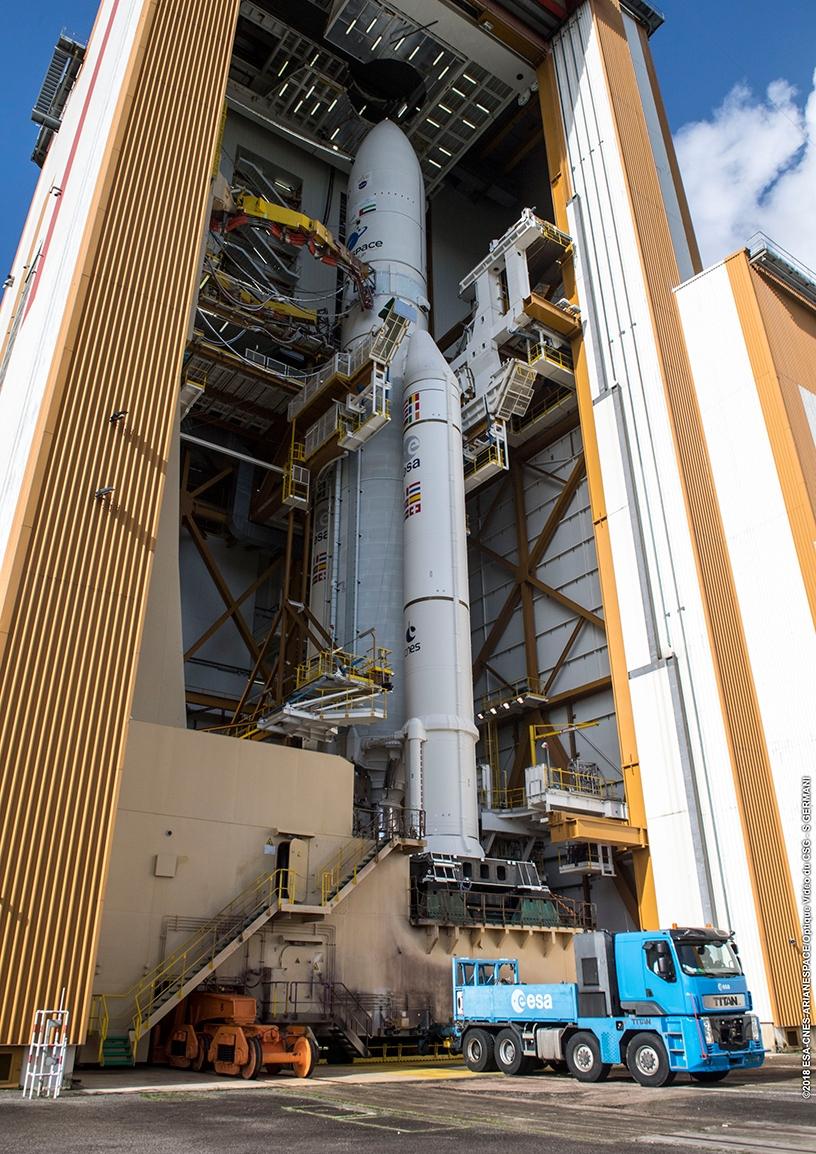
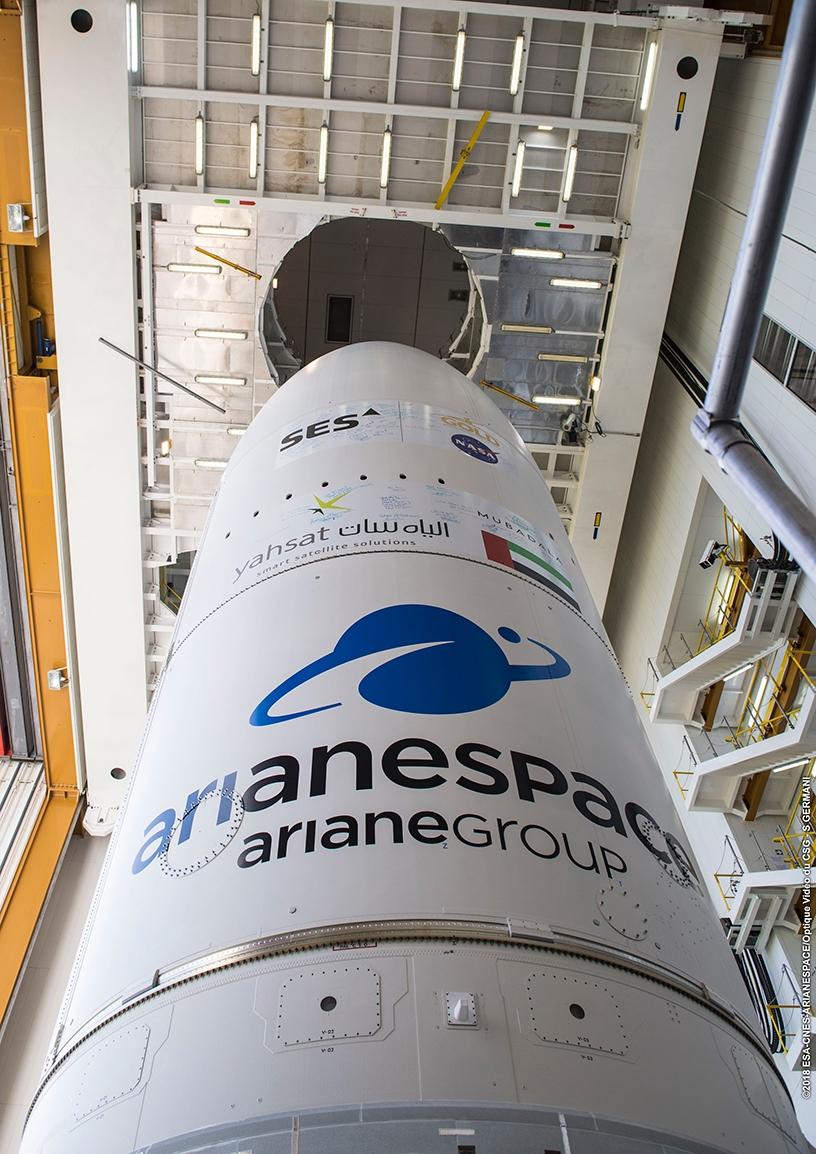
Arianespace Flight VA241 launch sequence.
* Article first published on itweb.africa
Share